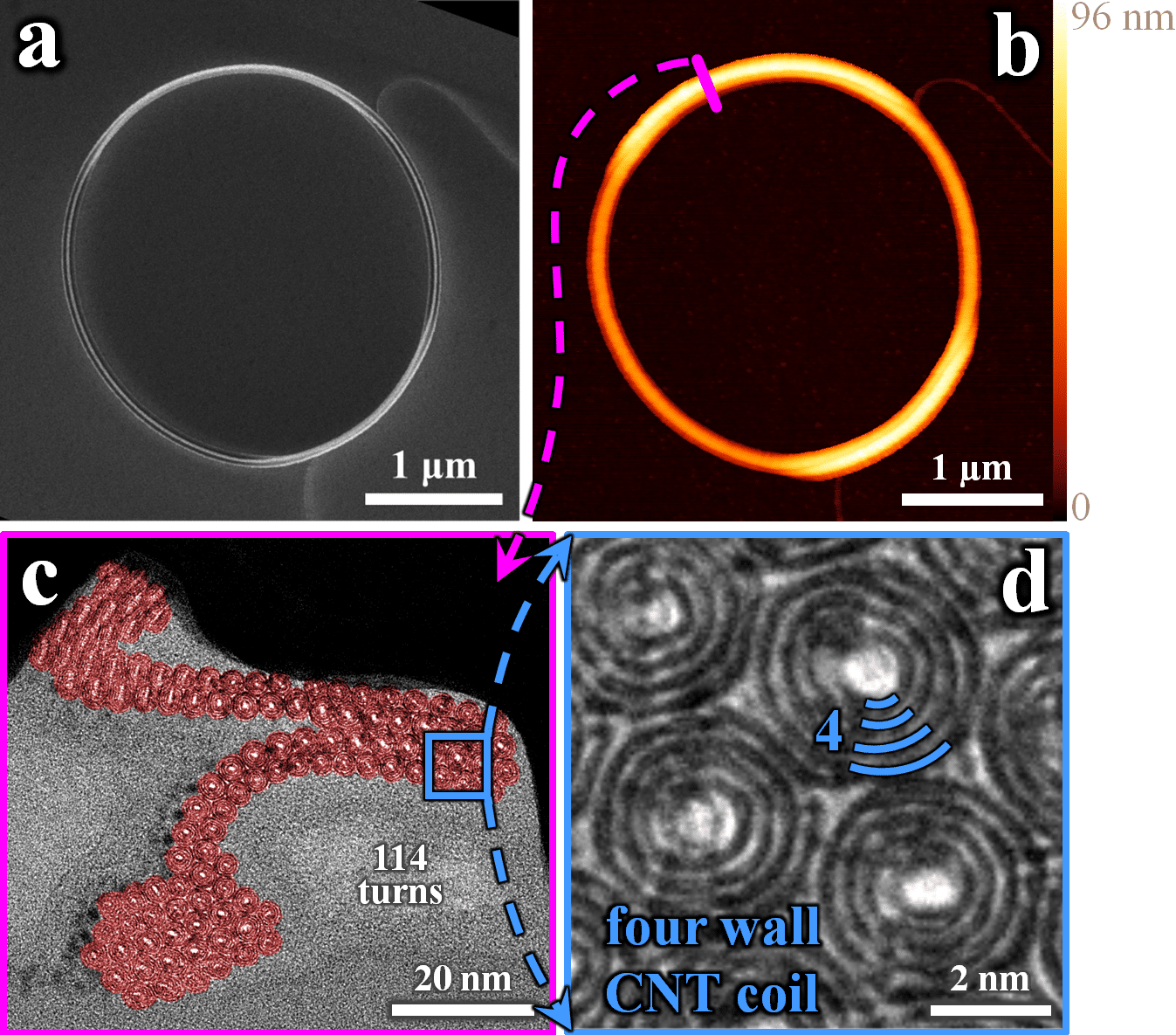While various electronic components based on carbon nanotubes (CNTs) have been produced, a micron-scale planar induction coil has not been demonstrated yet. Our group previously created defect-free single-wall CNT coils, but short-circuiting between turns prevents the coils from acting as inductors. To overcome this limitation, here we explore the use of few-wall CNTs, in which the outer walls may act as sheathing for the inner walls. We show the successful formation of the first few-wall CNT coils with accessible ends, low defect densities, and a µm-scale. We characterized their structural, optical, vibrational, and electrical properties using optical microscopy, SEM, AFM, top-view TEM, cross-sectional FIB-TEM, Raman spectroscopy and electrical transport measurements. The coils comprised CNTs of two, three and four walls with up to 163 turns and diameters of a few µm.
Based on the structural results and molecular dynamics simulations, we suggest they are formed according to the falling elastic rod mechanism. These ordered coils of uniform chiralities extend the known repertoire of self-organized structures of one-dimensional nanomaterials. They are also promising candidates for inductive devices, and for manifesting other interesting properties, such as electromagnetism, superconductivity, inter-wall and inter-tube coupling.


